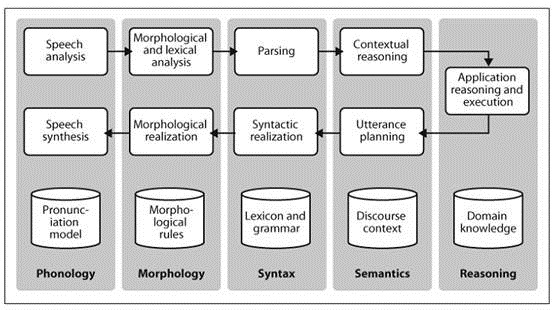Spoken input (top left) is analyzed, words are recognized, sentences are parsed and interpreted in context, application-specific actions take place (top right); a response is planned, realized as a syntactic structure, then to suitably inflected words, and finally to spoken output; different types of linguistic knowledge inform each stage of the process.

Limitations of NLP
Despite the research-led advances in tasks such as RTE, natural language systems that have been deployed for real-world applications still cannot perform common-sense reasoning or draw on world knowledge in a general and robust manner. We can wait for these difficult artificial intelligence problems to be solved, but in the meantime it is necessary to live with some severe limitations on the reasoning and knowledge capabilities of natural language systems. Accordingly, right from the beginning, an important goal of NLP research has been to make progress on the difficult task of building technologies that “understand language,” using superficial yet powerful techniques instead of unrestricted knowledge and reasoning capabilities. Indeed, this is one of the
goals of this book, and we hope to equip you with the knowledge and skills to build useful NLP systems, and to contribute to the long-term aspiration of building intelligent machines.